#arthurian inspired
Text
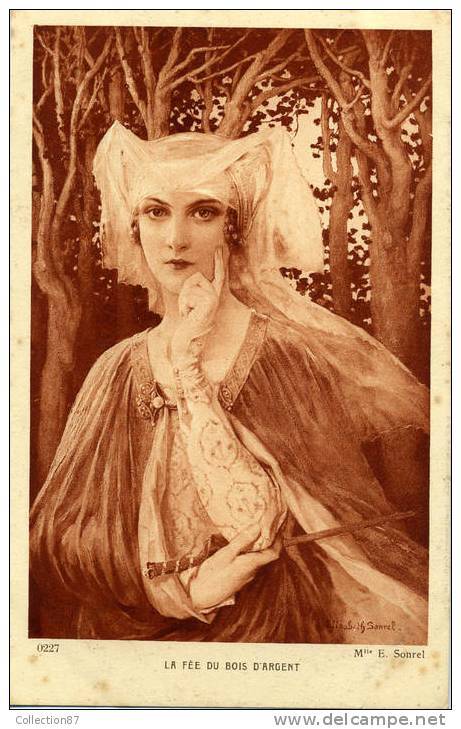
Élisabeth Sonrel (French, 1874-1953) • La Fee du Bois D'argent (The Silverwood Fairy) • No other information found
This image could've been an engraving or etching for a bookplate? It's a sepia version of the painting below.

La Fee du Bois D'argent (The Silverwood Fairy) • Unknown date
#illustration#art#illustrator#artwork#élisabeth sonrel#woman artist#arthurian inspired#portrait#french artist#women in paintings#female portrait#female artist#sassafras and moonshine blog#illustration & design
811 notes
·
View notes
Photo



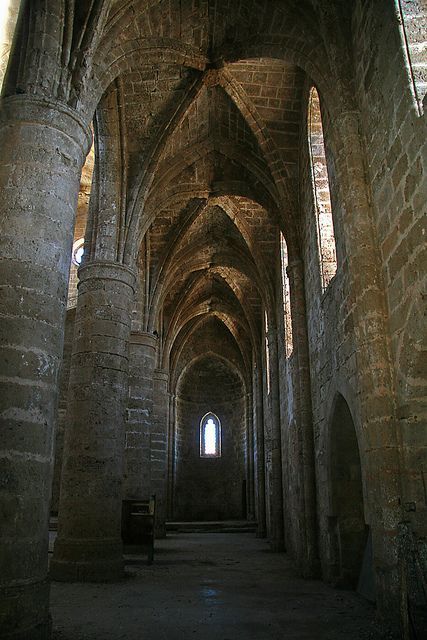




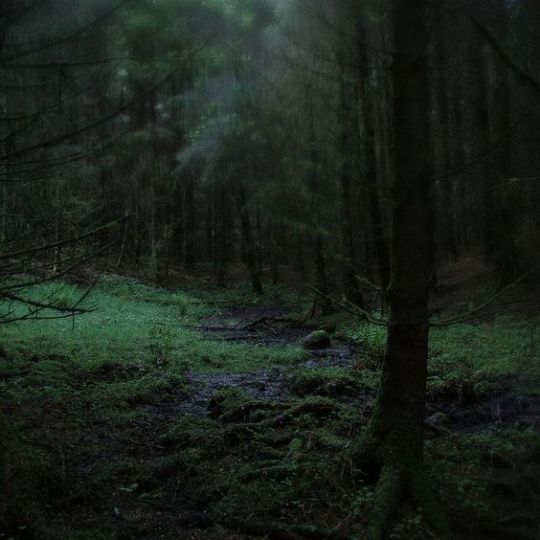
Silver in the Bone by Alexandra Bracken Aesthetic
Break the curse before it breaks you....
#silver in the bone#alexandra bracken#arthurian mythology#arthurian aesthetic#arthurian inspired#bookish#book aesthetic
8 notes
·
View notes
Text
TIME TO PRINT

#hobbit talks#andy rambles#linocut#linoprint#block print#andy does crafting#excalibur#arthurian inspired#arthurian legend#arthuriana
18 notes
·
View notes
Text
I just need to inform you nerds about absolute madlad academic Joseph Brennan
most notably, he wrote a paper about a queer reading of Mordred in BBC Merlin which heavily cites his own (poorly photoshopped) pornographic slash manips
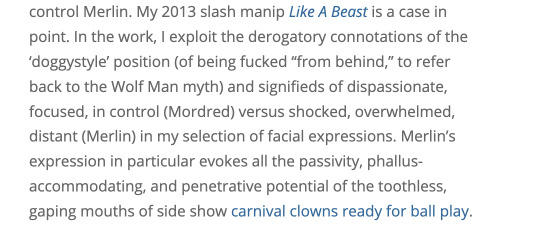

but he also edited a whole book about queerbaiting, including chapters about: Supernatural, Xena Warrior Princess, One Direction RPF, Supergirl, and the fucking Johnlock Conspiracy
all the rest of his work is about gay porn
I fucking love academia
#he has a phd in the same field I'm studying (media and communications studies). truly an inspiration#at xmas my aunt asked me 'are you going to do a phd in media? what would you do with that' I could write about gay fanfic fuck u aunt moira#although I have been talked out of writing my dissertation about arthurian legend as fandom. very sad#bbc merlin#merlin#I'll tag the other fandoms and ships mentioned. you can't read the articles without paying for it but might be interested to know it exists#supernatural#destiel#wincest#xena warrior princess#one direction#larry stylinson#supergirl#supercorp#sherlock#johnlock#tjlc#merdred
68 notes
·
View notes
Text

I remember, I swear - I was eighteen at the time /
Time to spare - far from the wind and rain /
And blueness reaching into every corner...
[a perceval for @mortiscausa's 'march to camelot,' for the prompt 'fool']
#em draws stuff#march to camelot#arthurian things#arthuriana#perceval#tripling the number of gradients since the last one. fuck with me.#getting sutcliff-y with it again! I am in a mood and evidently cannot be stopped (yet)#I Simply Think That Perceval's Weird Woods-Wanderer Phase Could Be A Bit Warrior Scarlet If We Wanted It To Be#maybe later in the month I will shift into more classic Knightsmode but also it remains that I don't like drawing armor#and on the other hand I LOVE drawing fabric. So.#the Idea was that I was going time-by-time so that I'd do later medieval for pieces where I was taking inspiration from later authors#like chretien de troye / marie de france / &c... but the transitional one is being sticky :/#stay tuned and We'll See I Guess (should not have decided to draw cei on a piece where I was doing time transition!)#caption lyrics are trials of cato again - the english translation of 'haf' this time around!
56 notes
·
View notes
Text

“I once saw the face of God, a vast and sudden silence among the noisy heavens.
That evening I dreamt I listened to one side of a conversation I should not have overheard.
I do not watch the skies anymore.
I do not look up.”
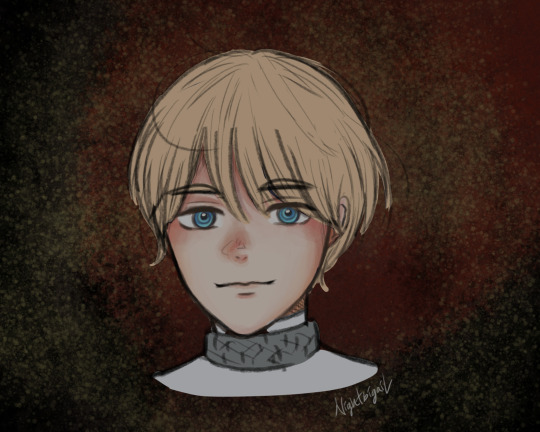
This Galahad lives in a dark fantasy world where monsters and terrible people run amuck and where everything sucks. He supposedly ascended to the heavenly realm after he found the Holy Grail, but nobody really knows what happened to him. He’s spotted years later as a lonely, jaded man who lost his chivalric spark. Whatever it was, he refuses to speak about it. Only God knows what he went through…

#just started reading king arthur & got inspired#he gives me gifted kid burnout vibes#Galahad#sir galahad#holy grail#arthurian#arthurian retelling#arthurian legend#arthurian fantasy#arthurian knights#king arthur#arthur pendragon#knights of the round table#knight#my art#fantasy#dark fantasy#medieval#medieval fantasy
69 notes
·
View notes
Text




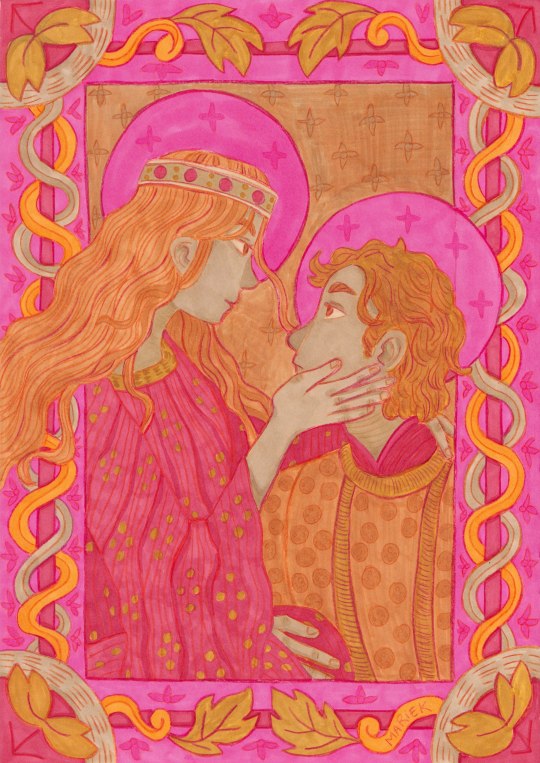

march to camelot wrapup ✨
#vooruitmariek#march to camelot#arthurian illustration#arthuriana#arthurian legend#sir gawain and the green knight#morgan le fay#ygraine#tristan and isolde#morgan la fey#promarkers#the last scan isn't exactly what it should be oh well#this was so fun!#for those who are interested: most of my borders/patterns were inspired by the book The World of Ornament published by Taschen#it's a great resource
49 notes
·
View notes
Text
chapters 51 and 58 of bloodmarked are absolutely CARRYING bree/nick/selwyn polyamory truthers
#selwyn is kind of a stupid name I realized as I was typing this. like I've gotten used to it over 2 books but it's so silly. selwyn#anyway. me disappearing for days and only showing up for like 30 minutes to reblog 3 things#and make a nigh incomprehensible post letting you guys know what book I'm reading now (read. I finished it yesterday actually.#now I'm rereading legendborn bc I'm apparently not ready to move on to a new book and also I forgot most of the shit from that book)#anyway I've been on the polyamory train for these 3 since I read legendborn in 2020 but I swear it's only gotten stronger#like what do you MEAN selwyn (magically oathed to protect nick) FEELS SAFER with nick around#THE SAME WAY BREE DOES. AND BOTH SELWYN AND NICK LIKE. AGREE ON HOW MUCH THEY LOVE BREE. AND THERE'S NO WEIRD JEALOUSY ABOUT IT#AND SELWYN CANONICALLY WAS AT ONE POINT IN LOVE WITH NICK????#AND NICK LITERALLY SAYS TO SEL “I CAN'T LOSE YOU AND I WON'T LOSE HER”????#LIKE?????#THERE IS NO WAY THIS IS YOUR STANDARD ASS LOVE TRIANGLE IT'S GOTTA BE AT LEAST A LITTLE POLYAMORUS#IF NOT A FULL TRIANGLE BREE SHOULD AT *LEAST* GET 2 BOYFRIENDS. SHE DESERVES IT#even if it does end up a standard love triangle though this is honestly a genuinely good one#like I genuinely like both love interests neither of them are weird or annoying or creepy about her#anyway. need book 3 out as soon as possible I swear to god I almost can't see how this ends in monogamy#I'm talking about the legendborn series by tracy deonn btw everyone#another arthurian inspired book series which if you saw my other post the other day I swear this isn't intentional#legendborn#bloodmarked#the legendborn cycle#tracy deonn#bree matthews#nick davis#selwyn kane
90 notes
·
View notes
Text
Zestiria and Shinto

I think it’s very understated that Zestiria takes a lot after Shinto (compared to say, how people keep bringing up its Arthurian inspirations, despite those inspirations being superficial relatively), especially when it’s the essence of the game itself, but I suppose it’s easy for it to go over people’s heads if they don’t truly understand Shinto itself, which to be fair is a concept that is not equivalent at all to the religions widely known in the modern West.
As a preface, if I have to be quite honest, I’m not too fond of the localization of the terms in Zestiria. In isolation, “Shepherd” is a fine translation of “導師”, they both more or less mean a person who guides, though I’m not sure how much of that idea the word manages to get across. However, coupled with “天族” being localized as “seraphim”, the game lore becomes connotated with Biblical implications, which is unnecessary and not at all what is intended, though I’d have been hard pressed myself if I were tasked to localize these terms in a way that could convey the original intent in English, but that’s not the point. The point is, I believe this loss in translation contributes to the misunderstanding, and besides, despite what you might think, the seraphim are not angelic beings, especially of the Christian kind.
With that out of the way, I would also like to clear up something else: religions and religiosity, as defined in the Western culture, do not readily apply to Shinto. It has no single founder, no canonical scriptures that are authoritative like the Bible, it has flexible moral code (or rather, it lacks a rigid moral code) due to its nature, and it is not at all a monolithic system; it’s not a unified system where the people who adhere to the faith proclaim themselves as Shintoists, because it doesn’t work that way. It is literally the “way of the kami” (神道) in that the term is used to reference the practice of worship of kami. It is not at all odd for modern Japanese people to practice this kami-worship and the rituals associated with it while also practicing Buddhism or even Christianity, for example.
The two essential, “sacred” texts of Shinto, Kojiki (古事記, literally “Records of Ancient Matters”) and Nihon Shoki (日本書紀, literally “Chronicles of Japan”), are basically history books (and they were commissioned to be compiled by the government), but they do not encompass everything there is to know about Shinto itself, since there are other books chronicling other kami as well, especially local ones. Even between the two books, mostly because of the differences in intended audience and purpose, there are naturally differences in details and interpretation of the ancient Japanese mythology, some even are contradictory (there are even differences in variants of Shoki accounts of the myth, so let alone Kojiki and Shoki). Also, I say history books (and they for the most part are history books indeed), but it is more apt to say that they are written chronicles of Japanese myths, legends, oral traditions, folklores, and such, but I would say Nihon Shoki is the more “objective” of the two. I think this part inspires Celestial Record as well as Lxi himgnowlot uz Yniitruh (or “The description of Glenwood” in English), the travel notes included as one of the special items in the LalaBit Collector’s Edition of the Japanese version of the game.
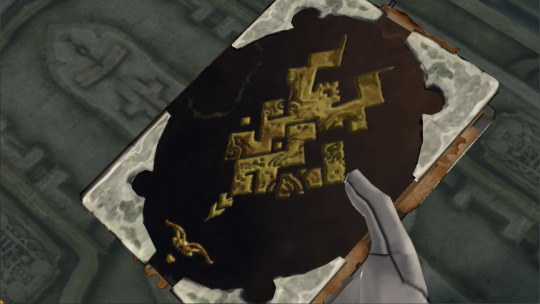
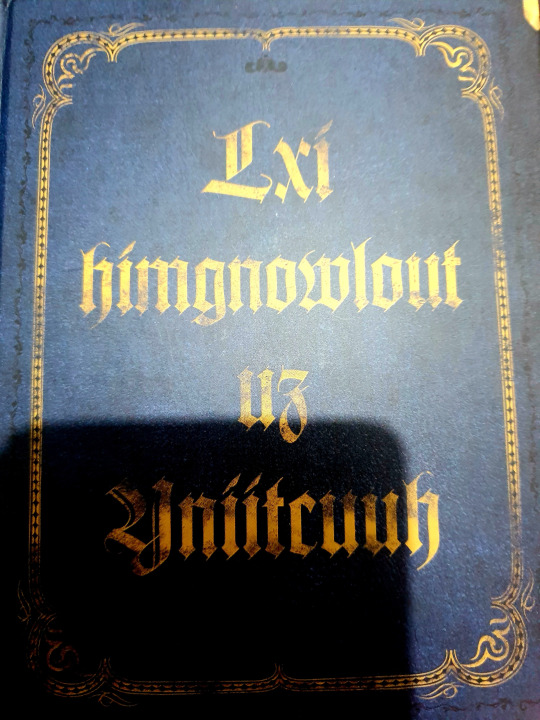

Already you can see how the historiography of Glenwood is influenced by Japanese historiography, because of the belief that has been there all along since the prehistoric times. The subjective interpretations of the situations or even origins that are not immediately knowable, especially, since both of these books are clearly written by humans (that fact isn’t hidden at all), make them feel more like they act as notes of the world, just like Kojiki and Nihon Shoki, and because of this subjective interpretation method, differences are bound to happen, even before getting to the differences of interpretations in individual readers. (By the way, the Japanese name for Celestial Record, 天遺見聞録, clearly implies this too, if translated a bit more literally, it means “the records of what is seen and heard as left behind in the Celestial.”)
Now, we get to the core of this, namely kami (神). Kami is often translated as simply “gods”, but this is, again, very misleading and not at all a good explanation of their nature. Kami, unlike the god(s) in other religions, do not come before or after the cosmos, they are the phenomena themselves and they are ubiquitous. A popular descriptor for them is “spirits or forces of nature” but even this is a simplification of what they really are. Kami describes the mind (心), an underlying principle (基本的原理), the divine to be worshipped (祭る), to be believed in (信じる), to be respected (崇める), to pray to (祈る), to be served (仕える), to be devoted (捧げる), to be given gratitude (感謝する), but most of all, kami possesses an eminent quality that is out of ordinary, that inspires the feeling of awe (畏怖) inside us all. To be in harmony with these awe-inspiring aspects of nature is to be conscious of the way of kami, and all phenomena are candidates for this designation, e.g., the sun, moon, mountains, or even great persons, heroes or leaders. However, to experience the kami presence of any one of these aspects of nature requires a pure and bright heart (清き明き心), which is an emotional, mental, and volitional condition that is not easily attained.
Here, I want to sidetrack to one of the above descriptors, that is, kami are to be worshipped (祭る). If you notice, it is the basic verb form of the word “festival” in Japanese, “祭り”. This is because one of the most crucial deeds toward kami in Japanese view is 祭る. The Japanese tend to be more religious when it comes to ceremonies than to the daily life. Worshipping kami in Japanese sense is different from other religions; whereas for some faith, the worshipping rite seems solemn and preoccupied, on the contrary, many Japanese worshipping ceremonies are very energetic and festive. Though the sacrament can be broken down into two parts: solemn ceremonial ritual and exuberant celebration, only the second part allows many people to participate more. In Zestiria, one of the biggest examples of this is the Sacred Blade Festival (聖剣祭).

But back to kami as beings. They are noble beings to be venerated, and there is a concept of Yaoyorozu no Kami (八百万の神, literally Eight-Million Kami) because there is an infinite number (eight million represents uncountable, just like how 8 as a number is often used to describe “infinity” in many cultures) and it is impossible to know them all (and it’s not like that uncountable number is static either... since humans can turn into kami and kami can inhabit any kind of object, that number naturally expands). Of course, with that many number, kami can vary from one another—they’ve been described as jinkakushin (人格神), or divine beings that have human-like qualities in that they have personalities and emotions of their own. This means that there are both benevolent kami and evil kami, so to speak. They can both bring blessings or harm to humans, and this duality means that kami are both revered and feared. Again, awe-inspiring aspects of nature. Which means Shinto as a religion isn’t exactly concerned with the afterlife like many religions, but with the nature itself, with the current life, as it is our world that is sacred. This is also true for the seraphim and the world in Zestiria.
Another term that is borrowed from Shinto is kegare (穢れ), which I usually translate to “taint” but in the context of localized Zestiria, it is known as malevolence. This, I feel, is another case of the localization causing even more misunderstanding than necessary; the kegare in Zestiria might not map 1:1 to the same concept in Shinto, but they are both fundamentally not a form of moral judgement, and whether the kegare itself is caused by a deliberate act, as for example in the case of a crime, or by an external event, such as illness or death, is secondary. As such, it is wrong to equate it to, say, Christian idea of sin, which malevolence, as a word that inherently suggests evil, kind of conveys to people. Kegare in Shinto is impermanent, as they can be remedied through purification. The concept of purity in Zestiria upholds the same quality being uphold by Shinto, namely, “真” which can be translated as “sincerity” but more literally, it means “truth.” Being true to yourself. This idea is reflected in the aforementioned “pure and bright heart” (“清き明き心”) since “pure and bright” in this case implies something that is transparent, that which is clean and clear, from the kanji themselves (to easily explain this more: 清 means “clear” and the Japanese word for transparent, for example, is 透明, which contains 明).

The Armatus (神依, kamui), as the highest power a Shepherd could have and described as the divine might (神威, which can also be read as kamui), is then, alikened to kamioroshi (神降ろし) in Shinto. Like the name implies (it literally means “descent of kami”), kamioroshi is a divine invocation held in that deity’s honor, to take possession of the one who invokes them. Since seraphim, who are based on kami, are forces of nature beyond mortal understanding, the Armatus again incites both reverence and fear of its powers.
Speaking of the seraphim being said to be beyond what humans could possibly understand, I believe this is partly why the true nature of them isn’t fully revealed. Details like how they’re born (or reborn), how they grow, what they actually are... these are meant to be mythical. We will never know, we can never know for sure. Humans tend to try to make sense of their surroundings, but there are just some things out there that will remain as mysteries to us no matter how much we try to uncover it.
(This applies as well to humans not knowing their own true nature... for example, the true nature of malevolence, said to be an irony of the contradictions of humans.)
――天族について詳しく教えてください。
山本 人から転生したという天族がいたり、いくつかの方則側はあきらかになっていますが、明確にこういう種族だよ、ということはできません。どちらかというと、神霊のような存在となっています。だから、天族たちは自分はこうなんですとか転生したんですと言っていますけど、実は何をどうしたらそうなるかという部分は非常にあいまいだったり、ケースバイケースだったりします。そういう、ルールで割り切れない部分を持った種族ですね。
――Please tell us about the seraphim.
YAMAMOTO: There are some seraphim who were reincarnated from humans, and some rules about it have been revealed, but it is not possible to say clearly what kind of race they are. If anything, they are more like divine spirits. That’s why, the seraphim are saying that they are like this or that they are reincarnated, but the truth is, the part about what to do to become like that can be very ambiguous or in a case-by-case basis. They are the kind of race that cannot be comprehended by mere rules.
――天族の成長は自身の思いにかかわってくるのですか?
山本 自分の力の強い時期まで成長するんじゃないかという推測はありますが、ここも実は法則性はないんです。
――Is the growth of seraphim related to their own thoughts?
YAMAMOTO: There is a conjecture that they will grow until they reach the peak of their own strength, but again, there are really no strict rules here.
And I understand how and why this would leave some people dissatisfied because they want to fully understand the inner workings of a fictional world to make sense of it, however at the same time, I think it’s not necessary for us to try pin down every detail to understand something holistically. Sometimes it’s fine to just feel it, to leave some things to our imagination even if it might seem hard to make sense of, but part of being humans is to appreciate beauty in these contradictions as well. Not everything has to have [human-knowable] rhyme or reason to it.
(While we’re at this, I would like to express a very subjective, very personal, and admittedly very biased opinion of mine: This is why I wish people would’ve been more appreciative of Zestiria as a standalone separate from Berseria, and not rely on Berseria to fill in the blanks of Zestiria. Berseria, to me, has a very distinct feel from Zestiria in the context of this, as the malakhim of Berseria don’t inspire the awe in me like how the seraphim are depicted in Zestiria. Everything in Zestiria that is supposed to evoke that sense of wonder, like the seraphim, Armatus, etc. is gone in Berseria, which tries to explain everything in a really mechanical, almost scientific way, and that beats the purpose of Zestiria with all its fantastical spirituality and vagueness that a lot of people hate but I personally really adore. And sometimes they can’t even do that right, as a lot of Berseria explanations directly contradict what is shown in Zestiria. This is also why I think intricate, overexplained worldbuilding is overrated; some details are better left hidden, imo. Even hidden is plain sight is better than directly explaining it to us.)
Of course, I can’t adequately explain everything that is inspired by Shinto in Zestiria, and this barely scratches the surface (and that’s not counting inspirations from other myths, religions, and philosophies like Arthurian Legend, Buddhism, Daoism, etc. that are also in the game), but I hope this can give you the rough idea! Zestiria, I feel, is a game that puts a great emphasis on the wonders of its world—it’s not that everything that we know is all there is to the world, and this world has lived for a long time, unimaginably so by humans, so there’s bound to be some things that we just don’t know, we just can’t know, but have been there all along, and you can feel them even if most of the times you can’t put it into definite words. If you think about how vast the world is, and that it keeps evolving in its vast history, some unrecorded... we become more aware and appreciative of how beautiful the world really is. And in the case of Zestiria, this is reflected in the curiosity of Sorey, the protagonist, of the world, along with its history, that opens up before him. The legends have and will always live, and someday they will become “hope.”
#tales of#tales of zestiria#mino rambles#REALLY long post#basically my zestiria lovemail#as a side note: i do think them including arthurian legend inspirations is their way to evoke similar feel to this to western people#what the devs probably don't know is that myths work and feel differently in different parts of the world#so it probably isn't effective in bringing out that sense of wonder#since hase and baba expressed concerns about not wanting zestiria to be TOO japanese#mino talks zesty
99 notes
·
View notes
Text
Y'all, I might've read Dark Rise too many times but what fuck is this supposed to mean
He looked at the boy with the knife to his throat, the boy whose black eyelashes feathered down against his cheekbones as he glanced away from Kit, and he felt something like a shock of recognition pass through him.
But he was looking curiously at Kit’s eyes as if they reminded him of something.
#im definitely not thinking about how twp is kinda inspired on the arthurian legends#ty blackthorn#kit herondale#tda rereading#lady midnight#im paranoid. cs pacat has done this to me. this is probably nothing. this is probably nothing. this is probably nothing. this is nothing.
16 notes
·
View notes
Text
rip knights of the round table you would have loved lazer tag
#or paintball#inspired by#thinking about team Excalibur from#loaded march#doing lazer tag#and taking it so seriously with full on military manouvers#merlin#bbc merlin#arthurian legend
31 notes
·
View notes
Text
SIR PERCIVALLLLL!!!!! SHE’S SO COOOOOOOOL!!!! blaze is already so fucking cool she’s one of the coolest sonic characters ever and then they made her COOLER with dope ass ARMOUR and a SWORD not just any sword a RAPIER which is one of the dopest swords imo
#GOTTA LEARN TI DRAW ARMOUR#man i gotta say i fucking love the spirit of exclusively calling the satbk characters by their arthurian names#friendship ended with shadow knuckles and blaze now sir lancelot sir gawain and sir percival are my best friends#rambles#storybookposting#i don’t really know much shit about the arthurian legends but picking those three as knights was such an inspired choice#they’re already so knightly it just maps rlly well#GOD I LOVE SATBK
125 notes
·
View notes
Photo

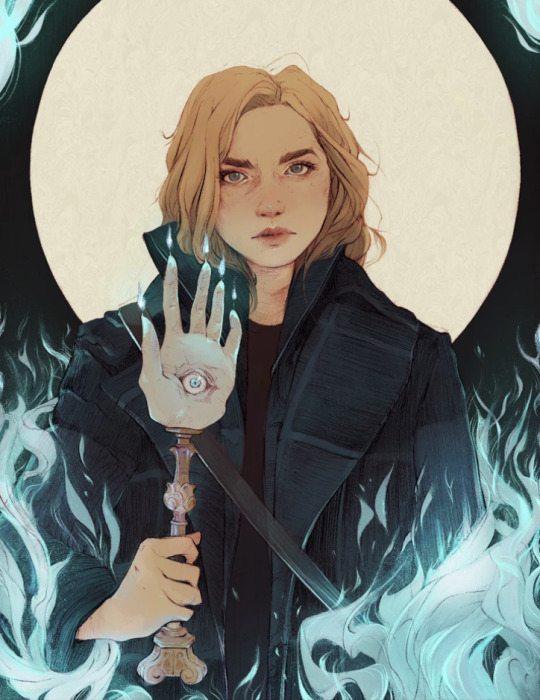
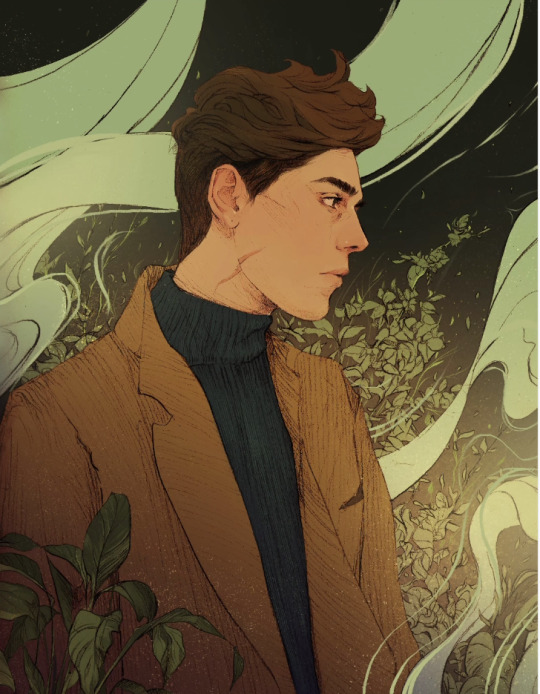




Rating: 4/5
Book Blurb: #1 New York Times bestselling author Alexandra Bracken cements her status as one of the top fantasy authors writing today in this stunning series opener inspired by Arthurian legend and fueled by love, revenge, and pure adrenaline!
Tamsin Lark didn’t ask to be a Hollower. As a mortal with no magical talent, she was never meant to break into ancient crypts, or compete with sorceresses and Cunningfolk for the treasures inside. But after her thieving foster father disappeared without so much as a goodbye, it was the only way to keep herself—and her brother, Cabell—alive.
Ten years later, rumors are swirling that her guardian vanished with a powerful ring from Arthurian legend. A run-in with her rival Emrys ignites Tamsin’s hope that the ring could free Cabell from a curse that threatens both of them. But they aren’t the only ones who covet the ring.
As word spreads, greedy Hollowers start circling, and many would kill to have it for themselves. While Emrys is the last person Tamsin would choose to partner with, she needs all the help she can get to edge out her competitors in the race for the ring. Together, they dive headfirst into a vipers’ nest of dark magic, exposing a deadly secret with the power to awaken ghosts of the past and shatter her last hope of saving her brother. . . .
Review:
An Arthurian inspired story filled with relic hunters, magic, curses, romance, and betrayal! Tamsin Lark doesn’t have magic, but that doesn’t stop her from being a relic hunter and trying to break the curse her adoptive brother is trapped under... that turns him into a werewolf. Tamsin has had a hard life, being a mortal with no magic powers makes her an outcast and being betrayed and abandoned by her thieving foster father all she has left is her adoptive brother and she will do anything to save him. Ten years after her foster father left them... there are rumors that he had vanished with a powerful ring from Arthurian legend. The ring is said to be able to break any curse... but with a price and Tamsin will do anything to have it. The only problem is that her rival, the rich and handsome Emrys is also after the ring for some reason and every other Hollower is trying to find the ring. Emrys is the last person Tamsin would ever want as a person but they find themselves forced together when others are after the ring as well and they’re each other’s best chances of getting to the ring. But the further they are on their journey the more the stakes rise and a darker magic is unleashed. Can Tamsin and Emrys trust each other and can they break their curse before its too late? Or will they betray each other in their attempt to free themselves? This is the first book in the trilogy and ends with a big cliffhanger. It was a fun take mixture of treasure hunting and arthurian legends and quest and it really was such a fun read. i really adored Tamsin so much and Neve was such an amazing friend, and EMRYS WHYYYYYY THAT ENDING WHY WOULD YOU?! YOU BETTER HAVE A GOOD ANSWER IN THE NEXT BOOK! Seriously, it was a fun first book in the series and I can’t wait to see where the next books go and whats in store for Tamsin!
*Spoiler*
Tamsin. Emrys. Neve, and Cabell end up in Avalon facing the knights who are trying to save everyone they love from the Children ( monsters related to the Lord of Death). Tamsin and Emrys grow closer and closer to each other with Tamsin letting her guard down. Emrys really loves to banter and get under her skin because as he explains, its cuz he knows she truly sees him and he always refers to her as “bird” because she is always flying away from him. Emrys says he has been abused by his father and he wants to free himself and his mother from him and needs the ring to do so. Tamsin wants to save Cabell despite how they fight with each other and is willing to do anything to save him. Emrys and Tamsin admit their feelings for one another and agree to keep their relationship status just between themselves. Tamsin and Emrys find the ring and then Emrys steals it and disappears from Avalon while the Lord of Death has awoken and now Cabell has teamed up with him accepting himself as a werewolf, parting from Tamsin. Now she has joined the knights of Avalon and opened up the door between the mortal world and Avalon... and the story ends with Nash, Tamsin’s foster father who had disappeared reappearing at her apartment door looking younger and telling her that he is here to help her break her curse.
*Thanks Netgalley and Random House Children's, Knopf Books for Young Readers for sending me an arc in exchange for an honest review*
2 notes
·
View notes
Text
Books I'm excited to read:
The Lost Queen by Signe Pike
The Children of Gods and Fighting Men by Shauna Lawless
Spear by Nicola Griffith
Books I need to pick up and read from the beginning because life got in the way:
Sistersong by Lucy Holland
#hobbit talks#andy rambles#bookblr#mythology inspired#arthurian inspired#funny about all of these is that they're right up my alley and have something to do with Tirinth#i need to get back into the groove of things#books to read
0 notes
Text















Recall the tale of Icarus.
Choose to be Icarus.
Linda K. Hughes, Text and Subtext in "Merlin and the Gleam", p.166 /// Alfred Tennyson, Merlin and the Gleam /// BBC Merlin, The Last Dragonlord (2x13) /// Natalie Wee, Patroclus Dreaming /// Hozier, I, Carrion (Icarian) /// BBC Merlin, The Wicked Day (4x03) /// @pencap, Please, Let Him Be Happy /// BBC Merlin, The Disir (5x05) /// Hozier, I, Carrion (Icarian) /// BBC Merlin, The Diamond of the Day: Part 2 (5x13) /// Natalie Wee, Patroclus Dreaming /// Alfred Tennyson, The Passing of Arthur /// BBC Merlin, The Diamond of the Day: Part 2 (5x13) /// Hozier, I, Carrion (Icarian) /// Alfred Tennyson, Merlin and the Gleam /// Natalie Wee, Patroclus Dreaming
#yes I am taking tennyson's poems that are very much about merlin the old man wizard and making it a gay romance#but!! many academics and tennyson's own son have said that merlin's grief for arthur in that poem was directly inspired by#the poet's grief for his almost-definitely-more-than-a-friend arthur hallam#I've been in a fun research rabbit hole today#I hope this post makes sense to literally anyone else lol#please just read the whole poem 'merlin and the gleam' cos there aren't many short parts I could use for this but the overall vibe#expresses this idea of destiny and blinding devotion far better. and it has a happier ending#merthur#merlin#bbc merlin#merlin web weave#merthur web weave#merthur meta#alfred tennyson#idylls of the king#arthurian legend
50 notes
·
View notes
Text
I am throwing around ideas in my mind of like different planets/areas in Honkai Star Rail being inspired by the same places but the cultural different between them come from the specific different eras of their real life inspiration
For example, I'm p sure they confirmed in Famitsu, they confirmed the Xianzhou is based upon the Pre-Qin dynasty myth of Elixir of Immortality and with certain other influences in it, but imagine a planet separate from the Xianzhou Alliance, that is too inspired by China but a different point of inspiration than the Xianzhou
And I could give other ideas I have but my mind can't pin them all together
#I'm imagining yingxings home#Like#Hmmmm#I dunno I'm just coming up with ideas#I have a lot of ideas for potential planets to exist in the universe of hsr#Like there are probably more planets taking from British mythology/culture than just the Arthurian mythology inspired place of Gui's home#And maybe there are more places with Slavic (and maybe a few nordic) inspiration than just belobog#And im excited to see what inspirations we get in Penacony bc it seems very#Just looking at all of the angels and Sunday and everything#I'm just spitballing tho#With countless planets that won't all be uncovered#I think overlap might be inevitable#Hsr#honkai star rail
17 notes
·
View notes